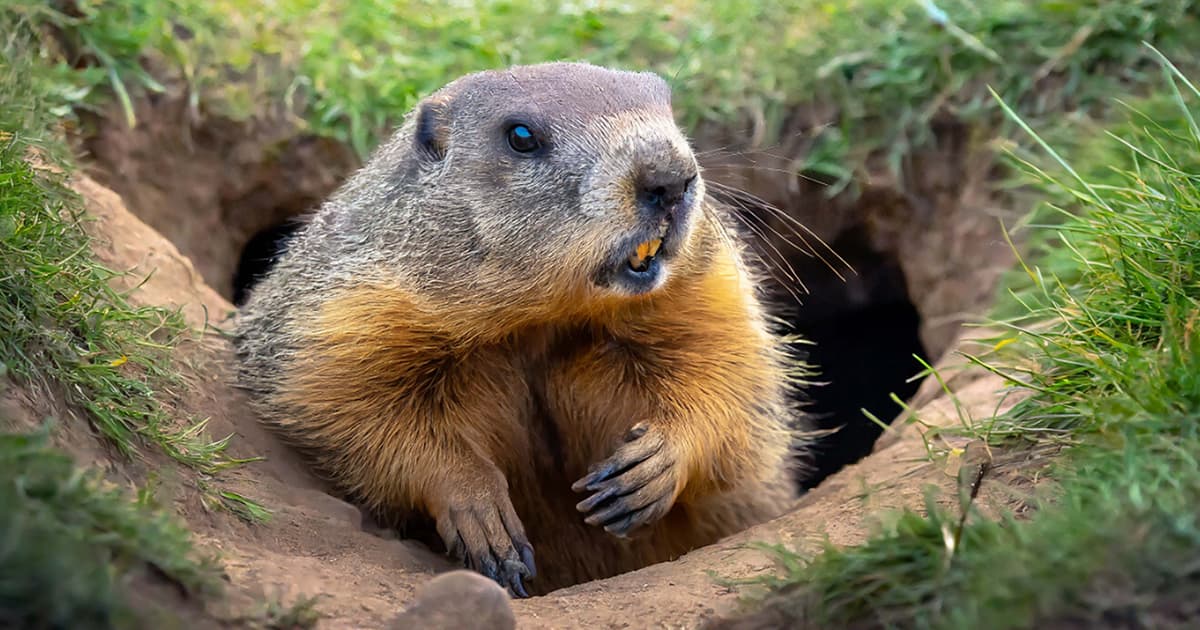The Famous Groundhogs Say Spring Will Come Early!

Spring should be on its way early. Wiarton Willie and American groundhog Punxsutawney Phil did not see their shadows on Groundhog Day. Shubenacadie Sam in Nova Scotia and Quebec's Fred la marmotte also predicted an early spring for 2024.
Wait a minute, though. Lucy the Lobster, from Nova Scotia, crawled out of the ocean and immediately saw her shadow. That is supposed to mean winter will last another six weeks.
In wintry Canada, though, do these predictions about an early spring really matter? Let’s hope the famous rodents are right and spring comes early.
When is Groundhog Day?
Groundhog Day is celebrated in Canada and the United States every year on February 2.
It gives us the opportunity to talk about one of our favorite topics and obsessions — the weather.
What is the significance of Groundhog Day?
Folklore tells us that when the groundhog sees its shadow, it will get scared and return to its burrow. That is supposed to mean six more weeks of winter.
If the groundhog comes out of his burrow and does not see his shadow, then early spring weather is supposed to be on its way.
Who are the famous groundhogs?
These famous weather rodents forecast whether spring will come early or there will be six more weeks of winter.
Wiarton Willie is the name given to a Canadian groundhog who lives in the community of Wiarton in Bruce County, Ontario. The Groundhog Day tradition in Wiarton dates back to 1956.
Punxsutawney Phil is a groundhog who lives in Young Township near Punxsutawney, Pennsylvania. The various Phils have been making predictions about spring since 1886.
Shubenacadie Sam is a Canadian groundhog who lives at the Shubenacadie Wildlife Park in Nova Scotia. The Shubenacadie Sam tradition began around 1987.
The new Fred replaced the one that died last year, took an early-morning dip into the snow in Percé, Quebec.
What are the origins of Groundhog Day?
Originally, Groundhog Day was a Celtic festival that marked the midpoint between winter and spring.
The day was called Imbolc, a term from Old Irish that is usually translated as “in the belly” and is a reference to lambs that will be born in the spring. The celebration of Imbolc signified that the sun was halfway through its advance towards the spring equinox, and the season of new birth and light was on its way.
The second of February also marks the Christian festival of light called Candlemas, which refers to the candles lit that day in churches to celebrate the presentation of the Christ Child in the temple of Jerusalem.
According to European beliefs, spring’s arrival could be predicted based on the awakening of certain animals, such as hedgehogs. It’s believed that European settlers, in particular Germans, brought this belief with them to North America.
Is there a movie about Groundhog Day?
Yes, there is and it’s called Groundhog Day, starring Bill Murray and Andie MacDowell. Released in 1993, the movie tells the story of Phil Connors (Bill Murray), a cynical television weather personality covering the annual Groundhog Day event in Punxsutawney, Pennsylvania. His character becomes trapped in a time loop, forcing him to repeatedly relive Feb. 2.
The term Groundhog Day in popular English culture means a monotonous, unpleasant, and repetitive situation.
What is Groundhog Day’s connection to the weather?
Since the traditional celebration anticipated the planting of crops and the birthing of animals, a focus of festivities was the forecasting of either an early spring or a lingering winter.
Sunshine on Candlemas (Feb. 2) was said to indicate the return of winter. If it were cloudy and overcast, warmth and rain would prepare the fields for planting.
Groundhog Day has roots in that belief.
What’s a groundhog?
Groundhogs can also be called woodchucks or whistle pigs and they are one of 14 species of marmots, part of the squirrel family. They can be found across Canada and much of the Eastern United States.
They love to dig and build. Groundhogs can build extensive burrows up to 20 metres long. Some even have multiple burrows with different entrances and rooms.



